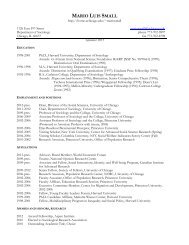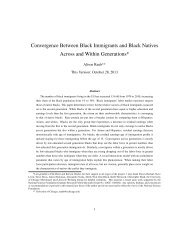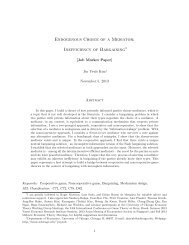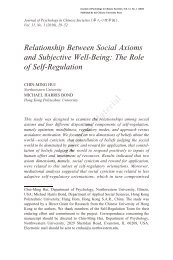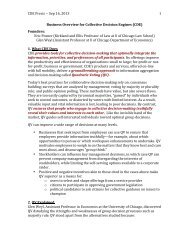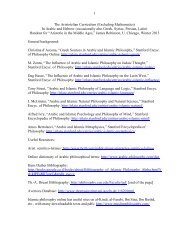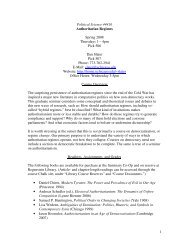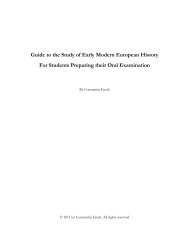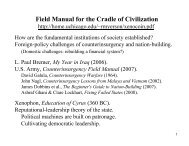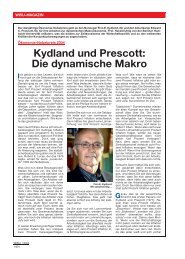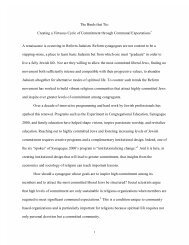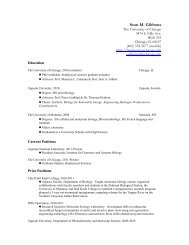Leopold Sedar Senghor Liberte 1:Negritude et Humanisme. On ...
Leopold Sedar Senghor Liberte 1:Negritude et Humanisme. On ...
Leopold Sedar Senghor Liberte 1:Negritude et Humanisme. On ...
Create successful ePaper yourself
Turn your PDF publications into a flip-book with our unique Google optimized e-Paper software.
Book Reviews<br />
of both <strong>Senghor</strong> and Senegal). As a result, <strong>Senghor</strong>’s party dominated Senegalese<br />
politics in the years leading up to independence in 1960, and <strong>Senghor</strong><br />
emerged in this period as one of the two most important politicians of<br />
West Africa, alongside the more radical Félix Houphou<strong>et</strong>-Boigny of Côte<br />
d’Ivoire.<br />
In 1960, <strong>Senghor</strong> became independent Senegal’s first president, a position<br />
he held until 1980. Throughout all this time, he continued to write po<strong>et</strong>ry,<br />
to produce elaborate and learned political analyses, and to participate actively<br />
in literary and intellectual life. But his popularity waned during his<br />
presidency. In part this reflected his break with Dia in 1962. More important,<br />
the inevitable problems of development in a country with few natural<br />
resources led to public disillusionment, although the post-<strong>Senghor</strong> years<br />
produced a certain nostalgia as well. <strong>Senghor</strong> was one of the few African<br />
leaders of his time to give up power voluntarily, continuing a Senegalese<br />
tradition of democracy that extended well before independence. <strong>Senghor</strong>’s<br />
r<strong>et</strong>irement held further surprises, however. In 1984 he was elected to the<br />
Académie Française. His writing continued unabated, and his po<strong>et</strong>ry became<br />
established in the French canon. He died in France in 2001.<br />
<strong>Senghor</strong>’s published work takes two forms. First are the po<strong>et</strong>ry collections,<br />
which appeared in 1945, 1948, 1956, 1961, 1964, 1969, and 1979. They<br />
constitute a sustained examination of <strong>Senghor</strong>’s life, from the first po<strong>et</strong>ic<br />
memories of Africa, written in the gray winter of Paris, to the elegy for his<br />
son Philippe, who died in an automobile accident when <strong>Senghor</strong> was 76.<br />
<strong>Senghor</strong>’s po<strong>et</strong>ic gift was lyrical and self-consciously African. His po<strong>et</strong>ry is<br />
pervaded by rep<strong>et</strong>ition, rhythm, and assonance—devices he identified as<br />
central to negritude, the black experience of the natural and social worlds.<br />
Likewise, his choice of the lyric genre paralleled his identification of negritude<br />
with direct sensual experience and a “surreal” connection to the<br />
world (for <strong>Senghor</strong>, “surreal” meant “beyond the real” or “more than real”).<br />
Indeed, <strong>Senghor</strong> once remarked that a black man always possessed a lyrical<br />
sensibility [Liberté 1, p. 66]). Although <strong>Senghor</strong> was both an adept<br />
practitioner as well as an admirer of the abstract thinking that he found<br />
in Europe, he contrasted European abstraction throughout his life with<br />
the lyrical and direct mode of experience for which Africa was both his<br />
personal source and—in the abstract, European sense—his symbol. It is<br />
the merit of thinking in po<strong>et</strong>ry that <strong>Senghor</strong> could always sustain this ambivalence<br />
b<strong>et</strong>ween abstraction and concr<strong>et</strong>eness, where the pressures of consistency<br />
and discipline would have forced a writer of treatises to choose the<br />
one or the other.<br />
This persistent ambivalence also pervades the second form of <strong>Senghor</strong>’s<br />
work, the collections of other writings that form the five volumes of Liberté.<br />
Here are contained speeches, lectures, introductions and prefaces, reviews,<br />
essays, reports: all the prose <strong>Senghor</strong> generated in a long intellectual life.<br />
The volumes are loosely organized by topic, but since they appeared in 1964,<br />
1971, 1977, 1983, and 1993, they are also inevitably chronological. Liberté 1,<br />
reviewed here, contains two prewar pieces, but the majority of its contents<br />
301<br />
This content downloaded from 128.135.12.127 on Wed, 13 Nov 2013 17:25:32 PM<br />
All use subject to JSTOR Terms and Conditions



